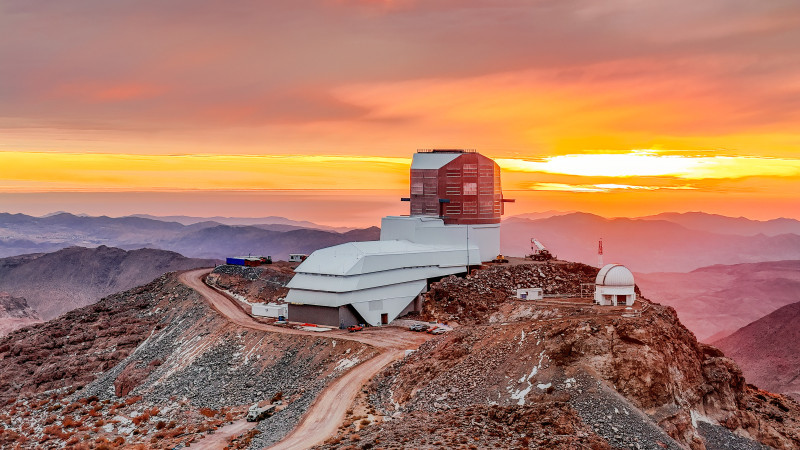NSF-DOE Vera C. Rubin Observatory
NSF-DOE Vera C. Rubin Observatory, jointly funded by the U.S. National Science Foundation and the U.S. Department of Energy, Office of Science, is a brand new astronomy and astrophysics facility that is nearing completion on Cerro Pachón in Chile.
It is named after the astronomer Vera Rubin, who provided the first convincing evidence for the existence of dark matter. The observatory will capture the data to create the ten-year Legacy Survey of Space and Time (LSST).

The Vera C. Rubin Observatory on Cerro Pachón, Chile
The Rubin Observatory is the first of its kind: its mirror design, camera sensitivity, telescope speed, and computing infrastructure are each in an entirely new category.
The 8.4-meter Simonyi Survey Telescope at Rubin Observatory, equipped with LSSTCam — the largest digital camera ever built — will take detailed images of the southern sky for 10 years, covering the entire observable sky every few nights and creating an ultra-wide, ultra-high-definition, time-lapse record — the largest astronomical movie of all time. This unique movie will bring the night sky to life, yielding a treasure trove of discoveries: asteroids and comets, pulsating stars, and supernova explosions.
With Rubin data we will gain a better understanding of our Universe, delve into the mysteries of dark energy and dark matter, and reveal answers to questions we have yet to imagine. Find out more at the Rubin website.